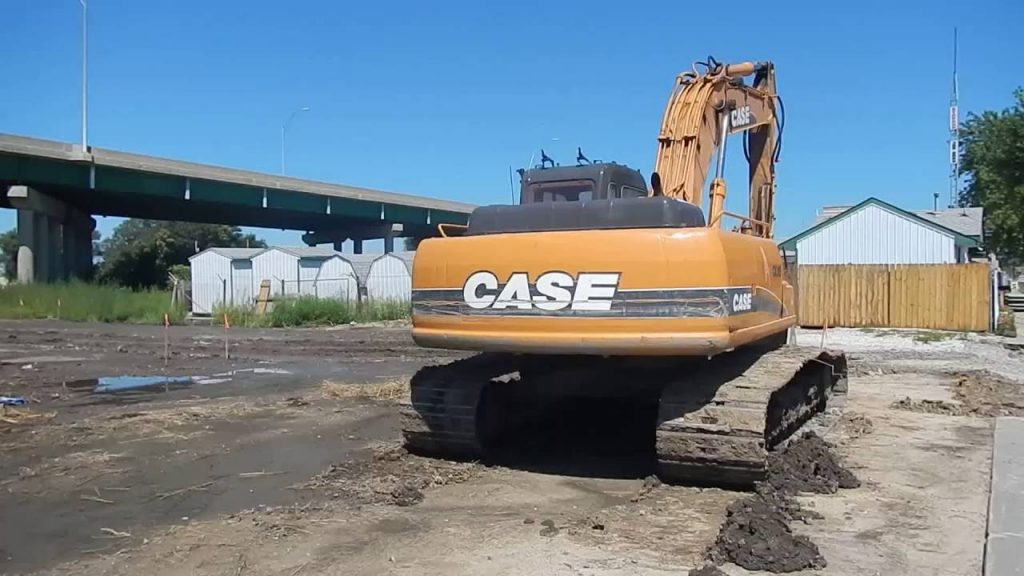A post has been titled on the procedure of case 688 excavator problems and solution. A solution is disclosed for different user relating to ease their trouble of repairing and maintenance, handling any kind of issue arises during the digging process.
Case 688 excavator actuators problems and solution
The hydraulic system is the most critical aspect of an excavator. The hydraulic system acts as the muscle for the machine, moving all of the hydraulic cylinders and motors to perform each task. A poorly maintained hydraulic system can be very dangerous to excavator operators and bystanders, because it can cause the backhoe to tip up or down, or lean from side to side, causing a rollover.
All excavators have a tilt bucket actuator that controls the tilt function on the hand and foot controls. The tilt bucket actuator is a double-rod cylinder with a fixed piston rod and a floating piston rod that moves in and out of the cylinder bore with the movement of fluid. The other end of the tilt bucket actuator is attached to a mechanical linkage that moves when the piston rod moves in or out of the cylinder bore.
To troubleshoot problems with your tilt bucket actuator, first identify what kind of problem you are having with it. If you are tilting your bucket forward, but it is not staying forward, then there could be air trapped in your hydraulic system.

Case 688 excavator wire harness problems and solution
The machine was a Case 688 excavator, with a Cummins 4BTAA3.9-C engine. The owner had the ECM out of the machine for about 2 weeks, but when the machine was started again, it ran fine.
The next morning, however, the machine would not start. The owner checked the engine sensor and fuses and everything was OK. The problem was that when the key was turned on, there were no lights on the instrument panel and no starter movement.
For this kind of problem, we need to check through the wire harness and connectors to find a solution. After checking all the wire harnesses and their connectors and found nothing wrong, we finally found the problem in the ignition switch connector.
Case 688 excavator engine problems and solution
When I work with the case 688 excavator, it will suddenly stop after working for a period of time. It is different from the fuel shortage or air leakage. It will automatically start again when I am on the ground. In case of failure, it will be difficult to start again. Sometimes it can’t be started at all.
After various inspections around the engine, there are no abnormal conditions. The oil pressure gauge is normal before and after the start, and the water temperature of the engine is also within the normal range; After some investigation, we found that after stopping and shutting down, we found that there were signs of burning on the high-pressure oil pipe in front of the injector pump (this piece was excluded before), so we pulled out this pipe and found that a part of it was burnt yellow, then replaced with a new one and tried it, which could solve the problem
1. Oil pressure is too low or no oil pressure at all;
2. The water temperature reaches the critical point;
3. The fuel filter is clogged;
4. Blockage of the suction pipe of the fuel tank;
5. Fuel suction pipe rupture;
6. Filter element clogging in pump body;
7. The filter element of the main oil pump is blocked;
8. The air filter element is blocked;
9. The main oil pump has problems causing abnormal oil pressure (low or high);
Case 688 excavator computer system problems and solution
1. The host is not in operation, the power supply is normal, the main circuit board does not respond, and the upper and lower main boards are exchanged to troubleshoot.
2. The computer display shows A.C. FAULT, which means there is a problem with the AC inverter circuit. If you press the ENABLE key and start it again, the alarm will disappear. This is because an abnormality occurs on one of the upper and lower main boards when turning on the host (the green light of the power supply board on the upper main board flashes), but it can be started normally under this condition, so it is not easy to find where it goes wrong. Occasionally, after turning off and turning on several times, it can be restored to normal operation (that is, no alarm) by itself.
3. Troubleshooting: first check whether there are any problems with the two PWM output lines of CN17A/B on the upper main board; then check whether there are any problems with the two PWM input lines of CN23A/B on CN23A/B; then check whether there are any problems with C125/C126/D125
Case 688 excavator engine sensor problems and solution
Electromagnetic interference (EMI) is a common problem in vehicles, especially during the cold start phase. A large amount of EMI causes EMI suppression devices to be damaged and cause abnormal operation, such as changing the engine speed signal and causing abnormal engine speed.
The Case 688 excavator engine sensor problems are mainly due to three aspects:
1. The harmful electromagnetic radiation at the spark plug is too strong
2. The complex electronic circuit in the car makes it difficult to shield electromagnetic interference
3. When the coil is charged, a large amount of current flows, which generates strong electromagnetic radiation
The solution for Case 688 excavator engine sensor problems are mainly concentrated in six aspects:
1. Pay attention to the ground connection cable when installing the transmitter
2. Pay attention to the protection of the cable connected to the transmitter during installation and construction
3. Check whether there is any breakage or disconnection of the EMI suppression device regularly, and change it if necessary
4. Try to avoid installing transmitters close to high-voltage cables or wires
5. Try not to install transmitters close to high-power electrical equipment such as motors and generators
6. Try not to install transmitters near electronic components that are prone to
Case 688 excavator engine wiring problems and solution
I have a 2003 Case 688 excavator with a control problem that I need help with. The machine shuts down at times and will not restart. The machine has always had this problem but rarely shuts down now. It has been getting worse in the last few weeks.
The machine will shut down when the key is turned off and then back on after it cools down for 10 minutes to an hour. The machine will start and run normally when the key is turned to the on position and start position. When the key is turned back to the off position, the engine will die instantly and will not restart until it has cooled down for 10 minutes to an hour.
I have checked all of the fuses and replaced several that were blown, but there are still no codes showing on the panel. When I turn on the power, I can hear relays clicking under the dash console near the seat. The machine seems to have good battery voltage when running at 12 volts, but after it shuts down, it drops below 10 volts.
I have run out of ideas on what to do next with this machine since I know very little about electrical problems on these machines. Does anyone know what could be causing this problem?
Case 688 excavator turbo problems and solution
1 .Case 688 excavator turbo failure
Case 688 excavator turbo failure, exhaust pressure is not enough, the engine power is insufficient, the exhaust temperature is too high. The turbocharger has poor performance and the oil return line of the turbocharger and lubricating oil circuit are blocked. The installation angle of the turbine shaft assembly is incorrect, and there are dirty objects in the intake filter.
2 .Case 688 excavator turbo solution
(1)The oil return line of the turbine shaft assembly is blocked or the installation angle of the turbine shaft assembly is incorrect;
(2)The intake filter is dirty or clogged;
(3)The clutch slip of the centrifugal clutch between the impeller and compressor impeller;
(4)The clearance between the impeller, compressor impeller and shell is too large or there are foreign objects in it;
(5)There are foreign objects in the suction chamber or suction filter;
(6)The intake manifold or intercooler leaks air;
